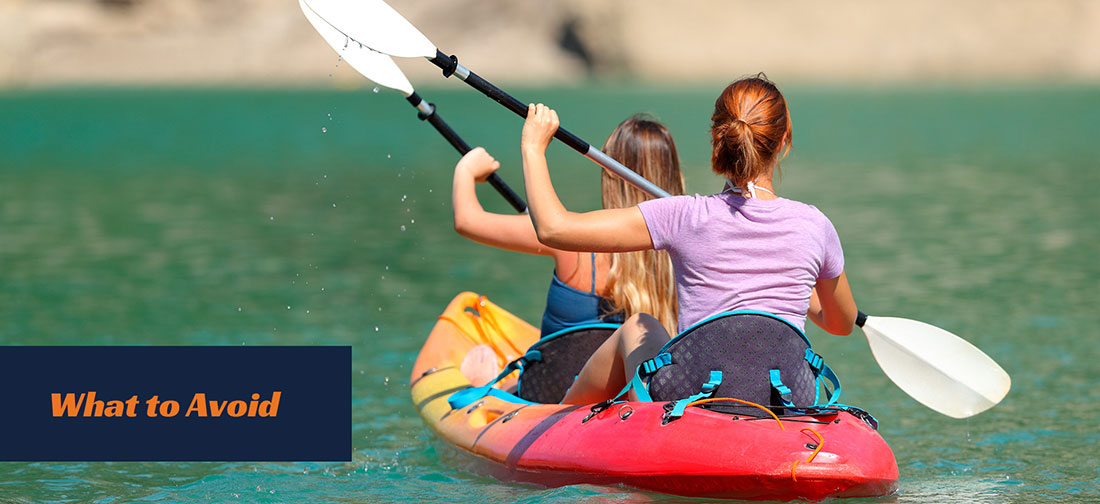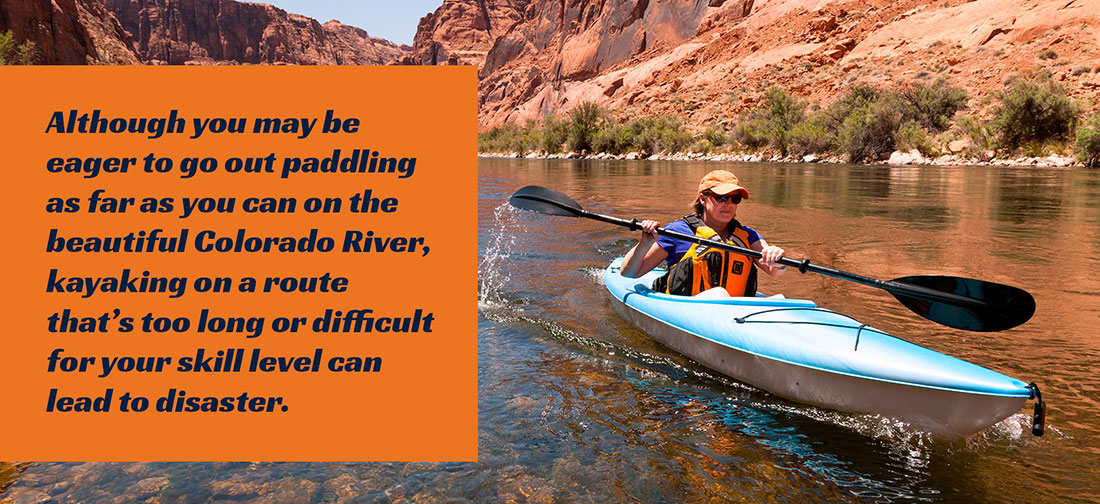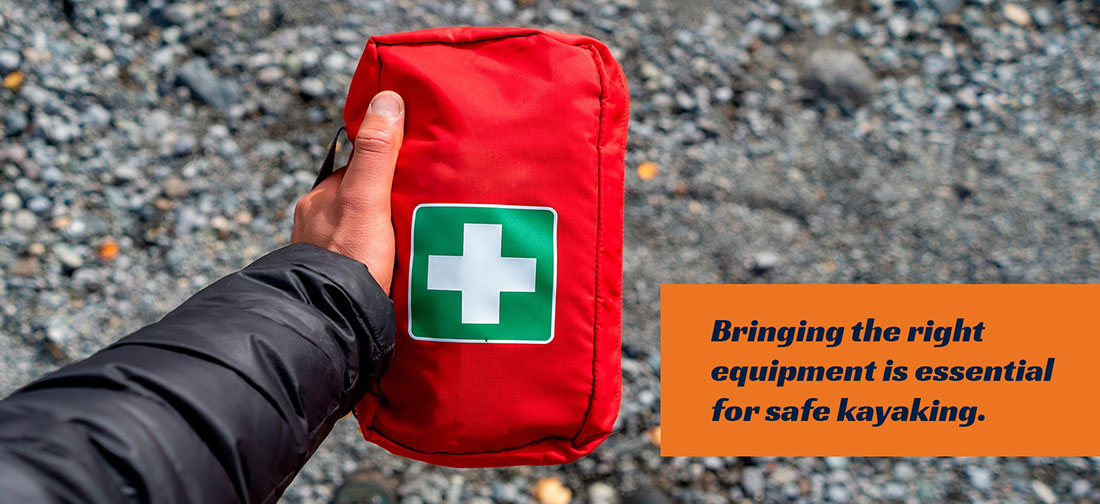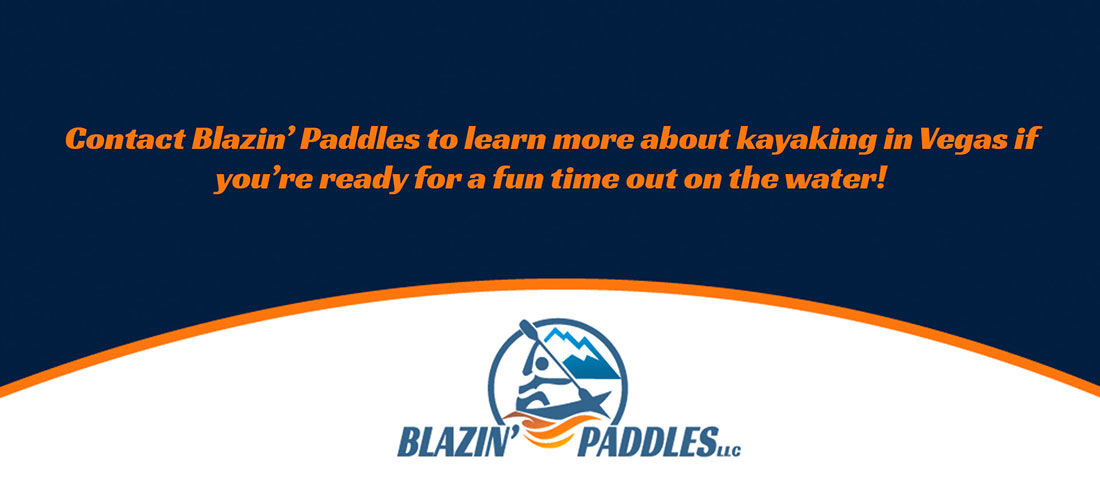What Not to do When Kayaking
Posted on: July 20th, 2023
When you’re kayaking in Vegas, the goal is to have fun and make lasting memories. However, as with any outdoor activity, you need to be prepared and know how to kayak safely to make the most of your experience. Before signing up for Vegas kayak tours, it’s important to learn how to kayak properly, including what not to do out on the water.
What to Avoid
Generally, kayakers should try to avoid the following:
Obstacles Bad weather Water controls Kayaking alone Choosing a too-difficult route Alcohol Not having the right equipment Forgetting a first aid and repair kit Getting lost Not knowing the rules and regulations
Obstacles are one of the biggest problems for people who go kayaking in Las Vegas and need to become more familiar with the water. Watch out for submerged rocks and logs that can pose a hazard to boaters. Water that ripples on the surface can indicate an object below the surface that should be avoided. If you paddle in a place with obstacles, know how to maneuver the boat in case you need to get around them.
Encountering bad weather in a kayak can range from unpleasant to dangerous. If you are out kayaking when a storm appears, try to get to shore and off the water as quickly as possible. To avoid getting stuck in bad weather, checking the weather forecast before leaving shore is a good idea. If the forecast looks questionable, or if you notice that there are strong winds or currents when you’re still onshore, skip your kayaking outing for the day or until conditions improve. Even if you don’t anticipate encountering extreme weather when you’re out, you may end up in adverse conditions such as the cold or intense sun. If you are starting out kayaking in the morning or plan to be out later in the evening, consider bringing extra layers in case the air temperatures drop. You may want to bring gloves and wear socks with shoes as well for additional warmth. If the forecast calls for wind or rain, bring a windproof or waterproof jacket to avoid getting cold and damp.
Artificial water controls such as eddies and dams can spell trouble for people kayaking in Vegas. Water controls can appear suddenly when paddling downstream, and it can be challenging to avoid them. Some water controls, including dams and eddies, can also have dangerous currents that can pull your boat in a direction you don’t want to go. While kayakers of any experience level should be aware of possible hazards they might encounter, beginner kayakers should try to avoid hazardous water altogether. Sometimes you may encounter submerged man-made structures as well that can damage the kayak by tearing or puncturing the bottom of the boat. Novice kayakers should also steer clear of fast-moving waters, which can hide obstacles and make it more difficult to avoid them if they do appear.
Kayaking solo can be dangerous for beginner kayakers, as you may get into situations like flipping the boat or otherwise needing assistance. If you don’t have a partner with you, you might not get help quickly. It’s also not a good idea to go kayaking near Las Vegas alone if you’re unfamiliar with the water. More experienced kayakers may have the skills and confidence to manage shorter solo kayaking outings. Still, no matter how long you’ve been kayaking, it’s wise to go with a partner if you are planning to make a longer kayaking journey. Even experienced boaters can run into problems like capsizing, hitting an obstacle, or getting into an accident. Along with safety reasons, going kayaking with other people can be a great way to build or strengthen friendships, and you can also learn from veteran kayakers.
Although you may be eager to go out paddling as far as you can on the beautiful Colorado River, kayaking on a route that’s too long or difficult for your skill level can lead to disaster. No matter where you’re going, any kayaking route you take will have a rating based on a water classification level. The calmest water you can go on is called Class A, the equivalent of a flat and calm lake. From there, water classification rankings go from Class I to Class VI. Class I waters are still relatively calm. Class II waters are also fairly calm, but you might need more technical skills in some parts. Subsequent levels bring more risks and challenges. The most extreme waters that you can go kayaking in are Class VI rapids, which should only be attempted by highly experienced paddlers. Class VI rapids are sometimes too dangerous for anyone to attempt depending on the weather. If you are planning a kayaking trip that involves going through any rapids at all, be sure to know the Eskimo roll in case you roll and need to get the boat upright again.
When you go out paddling on vacation or to catch an evening sunset, you may naturally think of bringing some alcohol along for the occasion. However, save the alcohol consumption for when you are back on shore. Drinking while kayaking can be dangerous, and it is also illegal. If you are caught drinking while kayaking, you risk getting fined or facing other penalties. Legal matters aside, kayaking under the influence of alcohol increases your risk of accidents, and it decreases your reaction time. You may end up taking more risks than you otherwise would, which can easily get you into trouble. If you are kayaking in hot weather, alcohol also increases your risk of dehydration.
Bringing the right equipment is essential for safe kayaking. At a minimum, you should have a water pump to remove excess water from the boat, a spray skirt, dry bags, and food and water. If you take medication, it’s a good idea to bring some along with you. Be sure to have a cell phone with you or another device that you can use for communication if needed. Bringing lights, extra clothing, and sun protection gear is also a good idea.
If you are going out on a guided kayaking tour, a guide will have extra supplies like a first aid kit and a repair kit. If you’re going out kayaking alone or without a professional, bring your own first aid and repair kits. A repair kit can help you fix simple boat problems like holes and punctures so that you can safely get back to shore. A first aid kit comes in handy for problems like blisters, insect bites, and stepping on sharp objects.
Getting lost can quickly lead to trouble, especially if you’re out by yourself or end up kayaking after dark. Always let someone else know your plan and when you intend to return if you are planning a solo kayak outing.
Although you don’t need a permit for kayaking in Nevada, there are other safety rules to be aware of, such as drinking alcohol, wearing a life vest, and having lights in your boat for visibility. Read up on the regulations before heading out to avoid problems.
Contact Blazin’ Paddles to learn more about kayaking in Vegas if you’re ready for a fun time out on the water!




